Centralization has helped onboard billions of people to the World Wide Web and created the stable, robust infrastructure on which it lives. At the same time, a handful of centralized entities have a stronghold on large swathes of the World Wide Web, unilaterally deciding what should and should not be allowed. They become monopolies in the industry.
It’s important to understand that the Internet and the Web are not the same. One sits over the other, as represented in the illustration below.
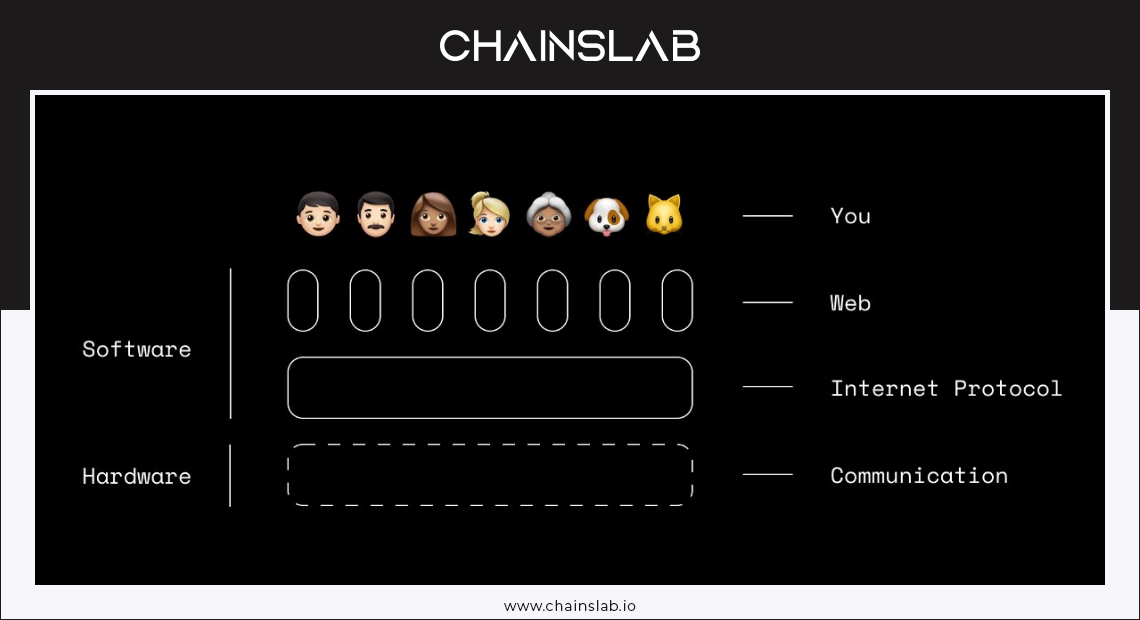
Web3 is the answer to this dilemma. Instead of a Web monopolized by large technology companies, Web3 embraces decentralization and is being built, operated, and owned by its users. Web3 puts power in the hands of individuals rather than corporations. Before we talk about Web3, let's explore how we got here.
I. History of the Web
When people talk about Web 1.0, 2.0 and 3.0, it is important to make a distinction that there are about as many different explanations, understanding and definitions of these terms as there are people who use them. There is no universally agreed on, nor “one size fits all,” description for these terms.
Most people think of the Web as a continuous pillar of modern life, it was invented and has just existed since. However, the Web most of us know today is quite different from originally imagined. To understand this better, it's helpful to break the Web's short history into loose periods of Web 1.0 and Web 2.0.
Web 1.0: Read-Only
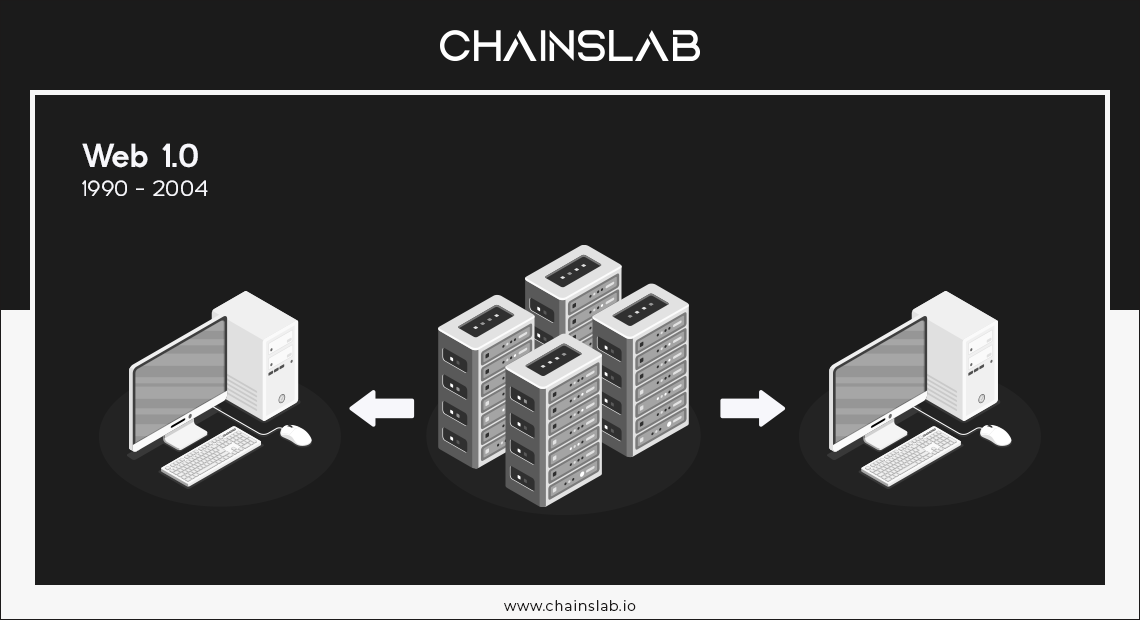
To understand Web 1.0, we need to crank the clocks way back to the inception of the internet itself. Believe it or not, the internet was created for a completely different purpose than watching cat videos, shopping and reading memes as we use it today.
In 1989, Tim Berners-Lee was busy developing the protocols that would become the World Wide Web. The idea was to create open, decentralized protocols that allowed information-sharing from anywhere on Earth.
The first inception of Berners-Lee's creation, now known as Web 1.0, occurred roughly between 1990 to 2004. Web 1.0 was mainly static websites owned by companies, and there was close to zero interaction between users and individuals, seldom producing content that led to it being known as the “read-only” web.
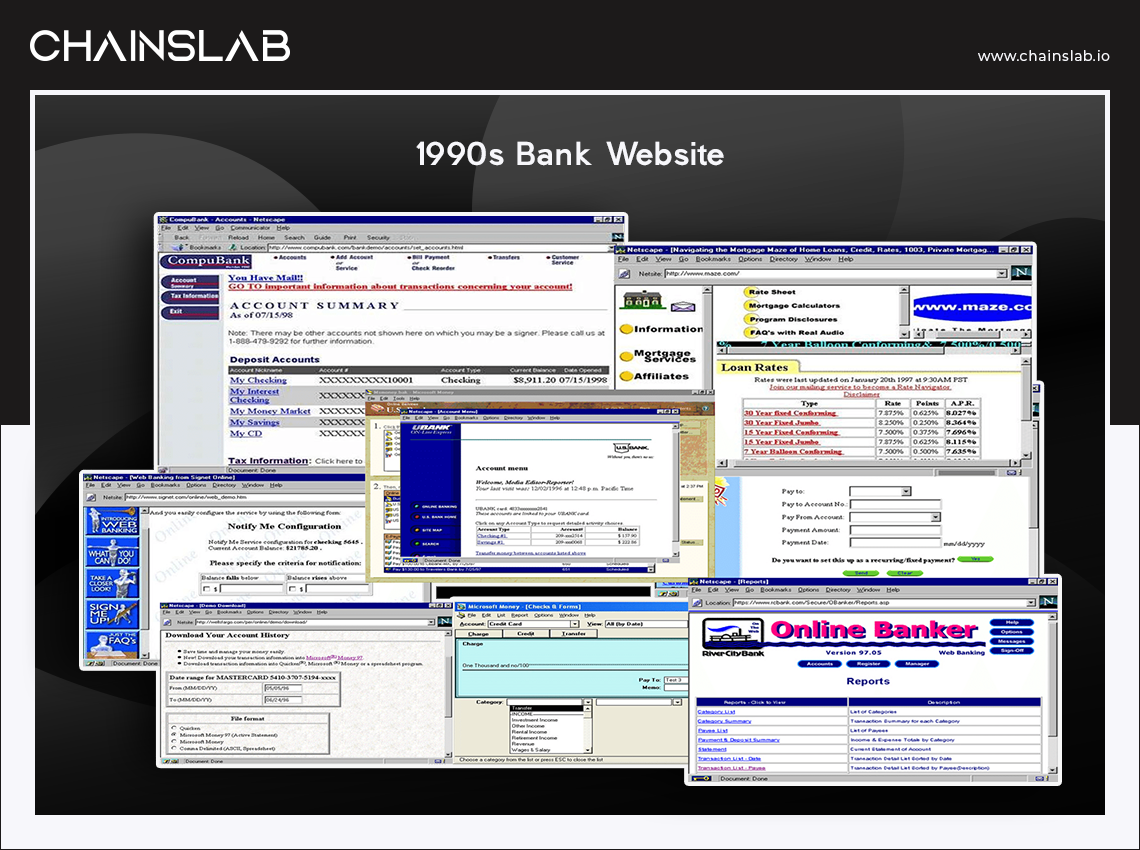
The early internet was mostly comprised of web pages that were joined together by hyperlinks, mainly text only without any visuals without the ability to interact with anything in any significant capacity. Essentially, the early internet was basically just a giant depository of ebooks.
Web 1.0 became an incredible resource for the sharing of information, with early government branches, research laboratories, educational facilities and institutions accessing web pages and sharing information as they were able to connect via commercial servers.
Eventually, dynamic URLs and further innovation and advancements would evolve the internet and its capabilities, transitioning Web 1.0 to 2.0.
Web 2.0: Read-Write
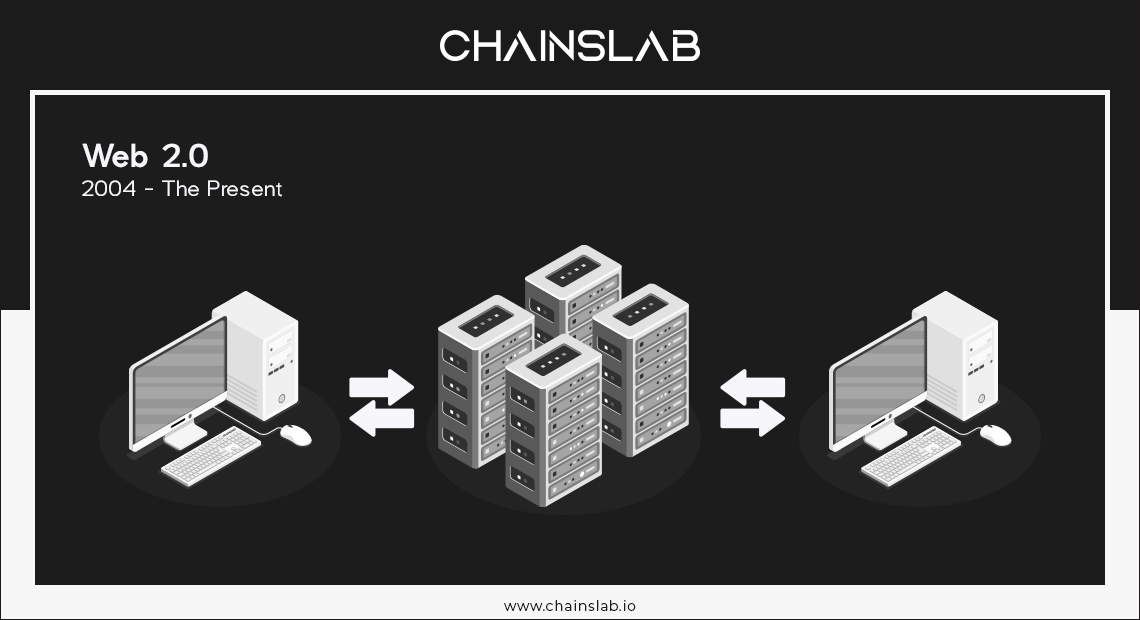
The Web 2.0 period began in 2004 with the emergence of social media platforms. Instead of a read-only, the web evolved to be read-write. Instead of companies providing content to users, they also began to provide platforms to share user-generated content and engage in user-to-user interactions.
Web 2.0 is where things get exciting and is basically the internet as we know it today, featuring our favorite shopping websites, video streaming platforms, articles writing, video games, social media platforms, etc,.
As more people came online, a handful of top companies began to control a disproportionate amount of the traffic and value generated on the web. Web 2.0 also birthed the advertising-driven revenue model. While users could create content, they didn't own it or benefit from its monetization.
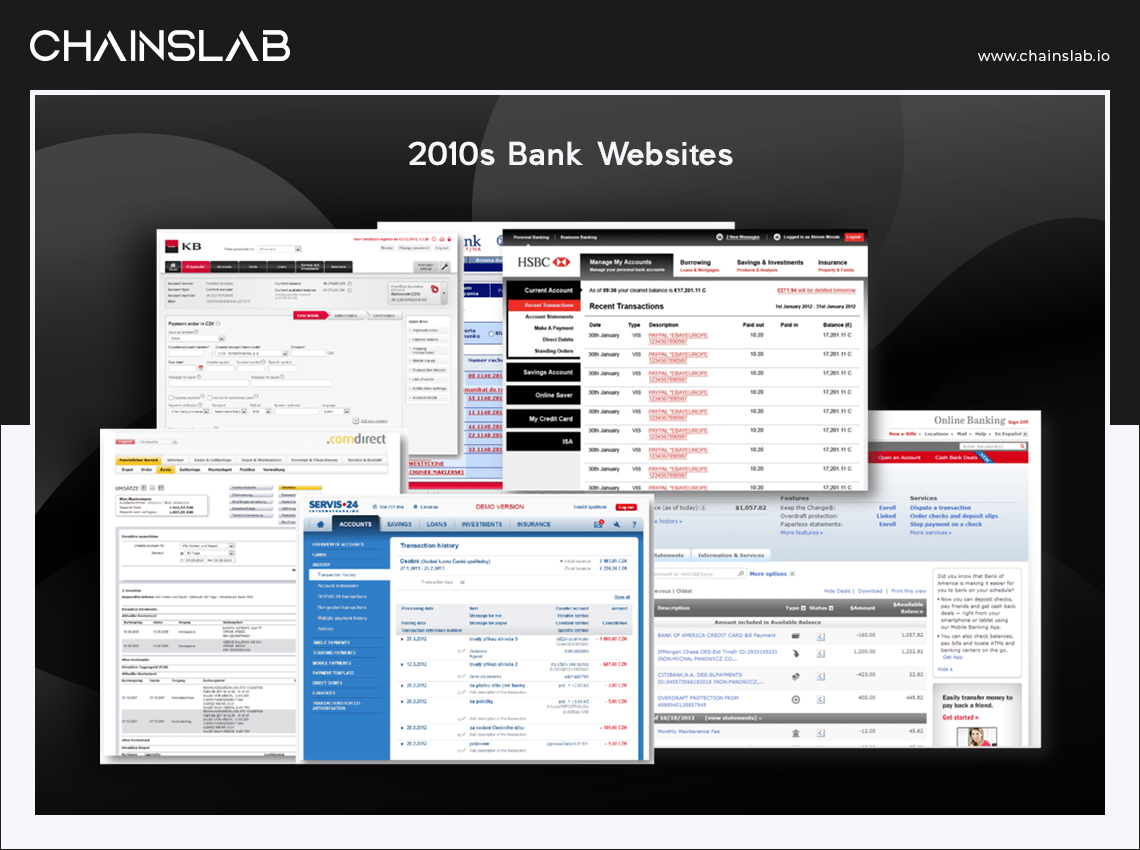
An eCommerce store built on Web 1.0 would have been like a shopping magazine with some basic images and text that a user could scroll and read through but that would be about it. Web 2.0 is what enables all the additional integrations and features like being able to add items to a shopping cart, check out, pay by credit card, and leave a review for others to read.
This era ushered in user-generated content on a scale that was never before possible with things like blogging, video sharing, chatting, voice messaging, emails and social media posts. The “Social Web,” reached mass scale adoption quicker than any other technological advancement in history and would hold that claim until Bitcoin would come along a number of years later.
Much like the gradual transition between Web 1.0 to Web 2.0, we are already in the middle of the transition to Web 3.0.
Web 3.0: Read-Write-Own
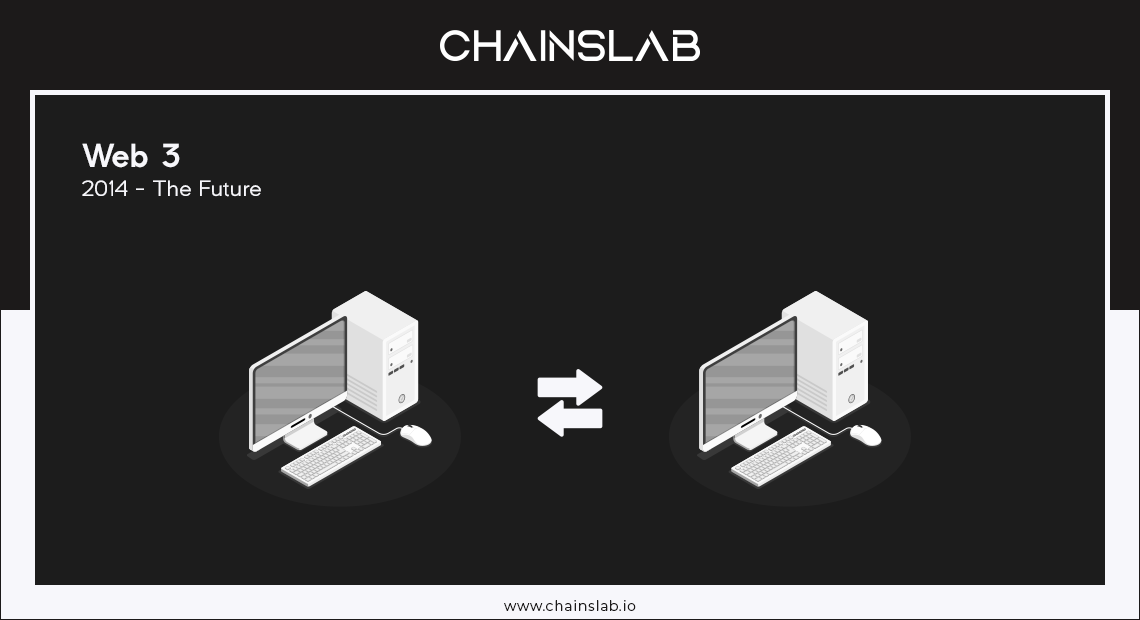
The premise of 'Web 3.0' was coined by Ethereum co-founder, Gavin Wood shortly after Ethereum launched in 2014. Gavin put into words a solution for a problem that many early crypto adopters felt: the Web required too much trust. That is, most of the Web that people know and use today relies on trusting a handful of private companies to act in the public's best interests.
“Less trust, more truth.”
While the second iteration of the web relied on users to offer data which the host would reap the benefits of, the third iteration would transfer the benefits back to the users. In most cases, with Web 2.0, you as a user had little to no control over your own data as mentioned above.
Furthermore, you never knew if the services, software, and programmes you enjoyed using would stick around. Web 3.0 is solving this. Not just is this iteration solving centralization brought about by the web, but solving centralization in most industries.
II. What Is Web3?
As it cores, Web3 uses blockchain, cryptocurrencies, DeFi and NFTs to give power back to the users in the form of ownership. Most Web3 applications are referred to as DApps (Decentralized Applications), which are built on peer-to-peer networks like IPFS and Ethereum.
Core Ideas Of Web3
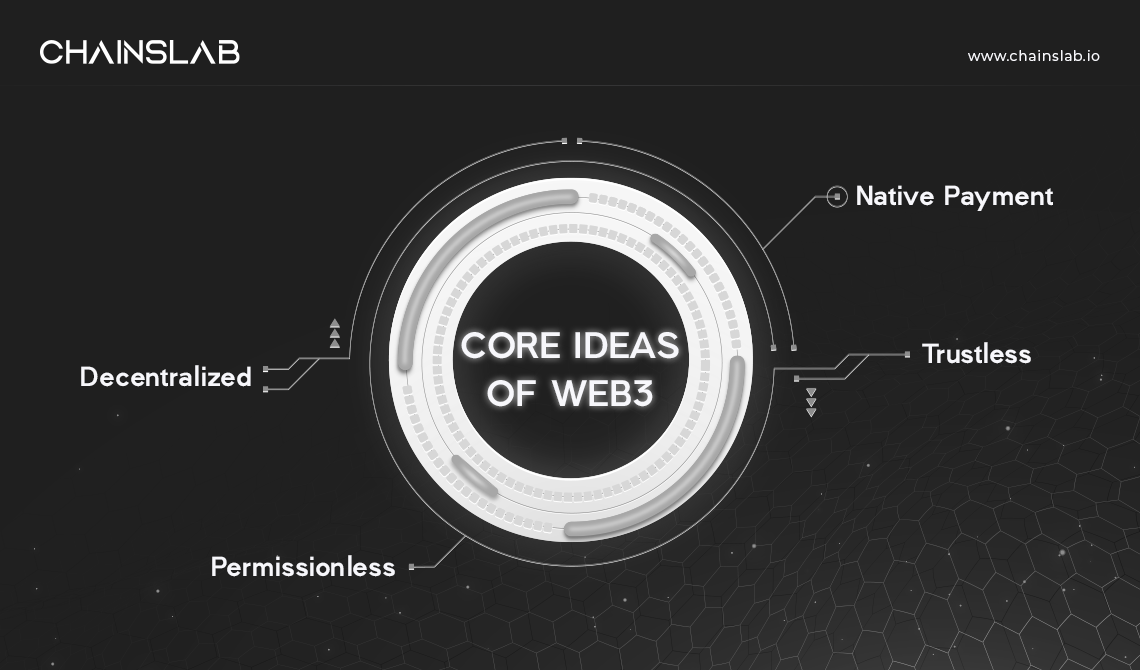
Although it's challenging to provide a rigid definition of what Web3 is, a few core principles guide its creation.
- Web3 is decentralized: instead of large swathes of the internet controlled and owned by centralized entities, ownership gets distributed amongst its builders and users.
- Web3 is permissionless: everyone has equal access to participate in Web3, and no one gets excluded.
- Web3 has native payments: it uses cryptocurrency for spending and sending money online instead of relying on the outdated infrastructure of banks and payment processors.
- Web3 is trustless: it operates using incentives and economic mechanisms instead of relying on trusted third-parties.
What makes them decentralized is:
- The decentralized nature of governance they follow: They’re self-organizing, meaning that the users that use these applications have power over what happens to said applications. Once deployed on their respective platforms, they’re open to the world. This is quite similar to the governance structure the internet follows.
- The decentralized nature of the platforms they lie on: Instead of being run by some central authority like a company, these networks are built, operated, and maintained by network runners, or in technical terms ‘nodes’. They’re self-organizing and lack a single point of failure.
III. Why Web3 Matters
Although Web3's killer features aren't isolated and don't fit into neat categories, for simplicity we've tried to separate them to make them easier to understand.
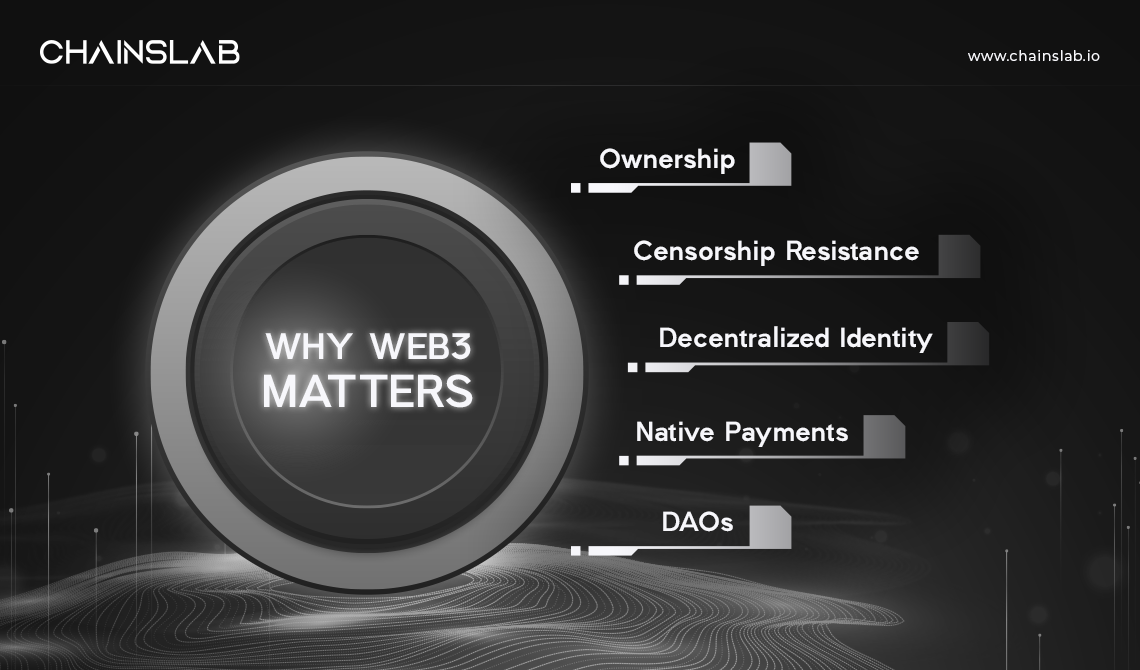
Ownership
Web3 gives you ownership of your digital assets in an unprecedented way. For example, say you're playing a Web2 game. If you purchase an in-game item, it is tied directly to your account. If the game creators delete your account, you will lose these items. Or, if you stop playing the game, you lose the value you invested into your in-game items.
Web3 allows for direct ownership through non-fungible tokens (NFTs). No one, not even the game's creators, has the power to take away your ownership. And, if you stop playing, you can sell or trade your in-game items on open markets and recoup their value.
Censorship Resistance
OnlyFans is a user-generated adult content site with over 1-million content creators, many of which use the platform as their primary source of income. In August 2021, OnlyFans announced plans to ban sexually explicit content. The announcement sparked outrage amongst creators on the platform, who felt they were getting robbed of an income on a platform they helped create. After the backlash, the decision got quickly reversed. Despite the creators winning this battle, it highlights a problem for Web 2.0 creators: you lose the reputation and following you accrued if you leave a platform.
The power dynamic between platforms and content creators is massively imbalanced. Web 2.0 requires content creators to trust platforms not to change the rules, but censorship resistance is a native feature of a Web3 platform.
On Web3, your data lives on the blockchain. When you decide to leave a platform, you can take your reputation with you, plugging it into another interface that more clearly aligns with your values.
Decentralized Identity
Traditionally, you would create an account for every platform you use.
For example, you might have a Twitter account, a YouTube account, and a Reddit account. Want to change your display name or profile picture? You have to do it across every account. You can use social sign-ins in some cases, but this presents a familiar problem - censorship. In a single click, these platforms can lock you out of your entire online life. Even worse, many platforms require you to trust them with personally identifiable information to create an account.
Web3 solves these problems by allowing you to control your digital identity with an Ethereum address and ENS profile. Using an Ethereum address provides a single login across platforms that is secure, censorship-resistant, and anonymous.
Native Payments
Web2's payment infrastructure relies on banks and payment processors, excluding people without bank accounts or those who happen to live within the borders of the wrong country. Web3 uses tokens like ETH to send money directly in the browser and requires no trusted third party.
DAOs
As well as owning your data in Web3, you can own the platform as a collective, using tokens that act like shares in a company. DAOs (Decentralized Autonomous let you coordinate decentralized ownership of a platform and make decisions about its future.
DAOs are defined technically as agreed-upon smart contracts that automate decentralized decision-making over a pool of resources (tokens). Users with tokens vote on how resources get spent, and the code automatically performs the voting outcome.
However, people define many Web3 communities as DAOs. These communities all have different levels of decentralization and automation by code. Currently, we are exploring what DAOs are and how they might evolve in the future.
IV. Web3 Limitations
Despite the numerous benefits of Web3 in its current form, there are still many limitations that the ecosystem must address for it to flourish.
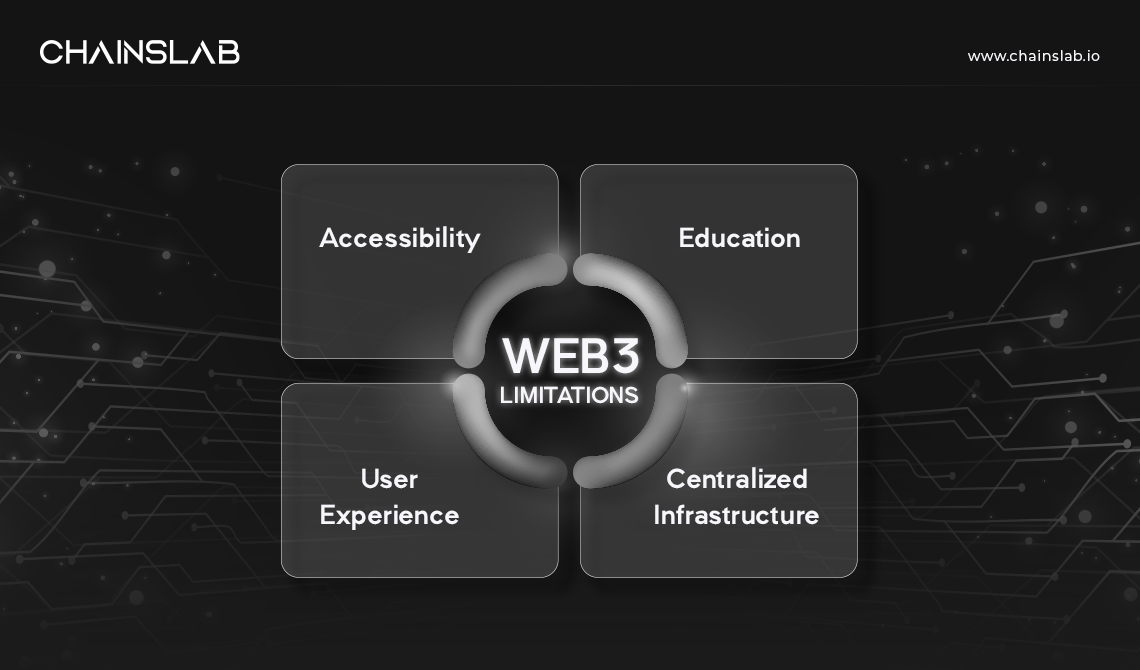
Accessibility
Important Web3 features, like Sign-in with Ethereum, are already available for anyone to use at zero cost. But, the relative cost of transactions is still prohibitive to many. Web3 is less likely to be utilized in less-wealthy, developing nations due to high transaction fees.
On Ethereum, these challenges are being solved through network upgrades and layer 2 scaling solutions.
Indeed, that's not a big deal anymore, now that there are many new blockchains with many improvements in speed and transaction fees are constantly being born.The technology is ready, but we need higher levels of adoption on layer 2 to make Web3 accessible to everyone.
User Experience
The technical barrier to entry to using Web3 is currently too high. Users must comprehend security concerns, understand complex technical documentation, and navigate unintuitive user interfaces. Wallet providers, in particular, are working to solve this, but more progress is needed before Web3 gets adopted en masse.
Education
Web3 introduces new paradigms that require learning different mental models than the ones used in Web2.0. A similar education drive happened as Web1.0 was gaining popularity in the late 1990s; proponents of the world wide web used a slew of educational techniques to educate the public from simple metaphors (the information highway, browsers, surfing the web) to television broadcasts. Web3 isn't difficult, but it is different. Educational initiatives informing Web2 users of these Web3 paradigms are vital for its success.
Centralized Infrastructure
The Web3 ecosystem is young and quickly evolving. As a result, it currently depends mainly on centralized infrastructure (GitHub, Twitter, Discord, etc.). Many Web3 companies are rushing to fill these gaps, but building high-quality, reliable infrastructure takes time.
V. The Decentralized Future
In simple words: Data is decentralized, the storage of the data is decentralized, and the communication of said data is still centralized. But as a result of newer incentive structures and ways of coordination as a result of Web 3.0 (and the already growing accessibility to high fidelity devices), the foundational layer (where the communication happens) is ripe to be decentralized as well. The technology and the network of participants finally make the idea of a decentralized internet feasible.
Web3 is a young and evolving ecosystem. Gavin Wood coined the term in 2014, but many of these ideas have only recently become a reality. In the last year alone, there has been a considerable surge in the interest in cryptocurrency, improvements to layer 2 scaling solutions, massive experiments with new forms of governance, and revolutions in digital identity.
We are only at the beginning of creating a better Web with Web3, but as we continue to improve the infrastructure that will support it, the future of the Web looks bright. Nonetheless, individuals should expect a significant amount of change in terms of how we interact on the Internet within the next few years. It will be an exciting time and one ripe with opportunities.
For the latest on Web3 and other technologies in the blockchain industry, head over to the Chainslab Twitter to keep yourself always updated.
